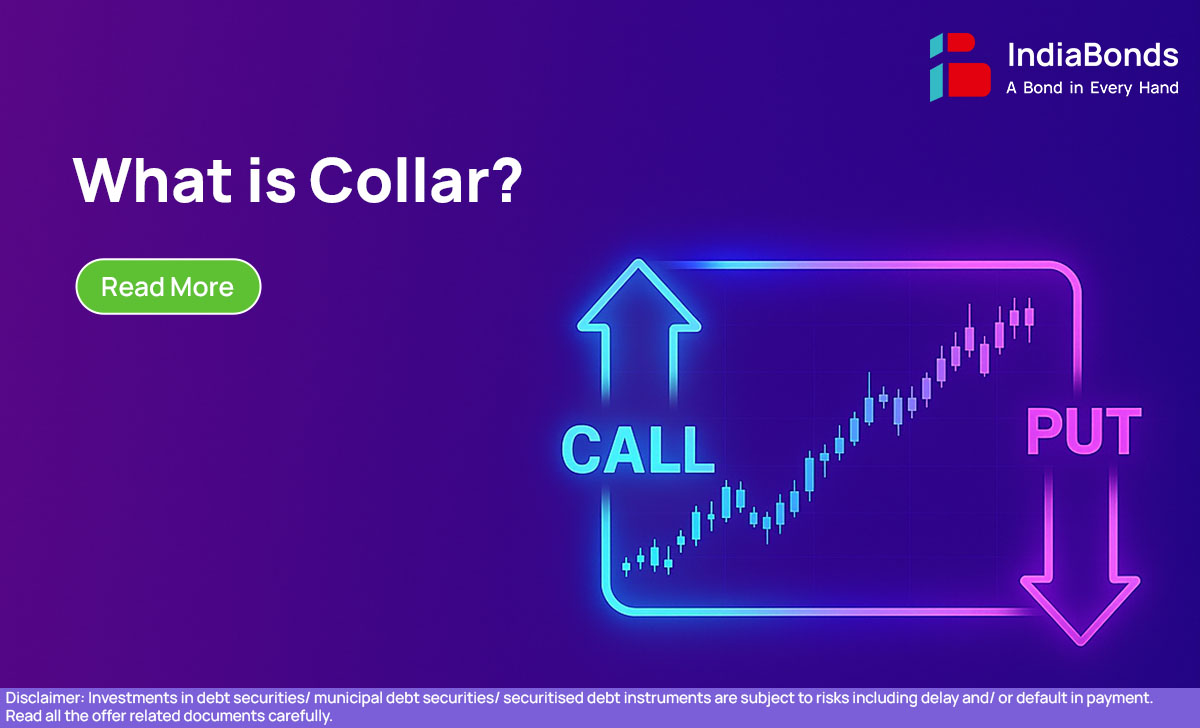What is Collar?

Every investor wants growth but hates the idea of sudden losses. That’s where the collar strategy comes in. It’s like putting boundaries around your money—one to stop losses and one to cap gains. Let’s look at the collar meaning in simple words and see why people use it.
What Is a Collar?
So, what is collar? In finance, a collar is nothing more than a way to protect your stock investment. It works by using two options at the same time—one bought and one sold. You buy a put to guard against a price fall, and you sell a call to give away some upside. The mix creates a range, almost like a protective band around your stock. The collar definition is clear: it’s a safety net for investors who want less uncertainty and more peace of mind.
Understanding a Collar
Now let’s break down how it works. Imagine you own shares you don’t want to sell but also don’t want to see crash in value. You buy a put option, which acts like insurance. At the same time, you sell a call option, which brings in money to pay for that insurance. The catch? If the stock jumps sharply, your gains are capped at the call strike price. Still, many like this trade-off because the collar strategy often costs little or nothing. In practice, the collar in finance is simply hedging—protecting yourself from bad surprises while accepting a limit on profits. That’s the true collar meaning.




Collar Break-Even Point and Profit or Loss
Profit and loss under a collar strategy are easier to picture with boundaries. The break-even is the original stock price adjusted for the option premiums. If the share price drops below the put strike, you’re covered, because the put gives you the right to sell at that level. If the stock soars past the call strike, your profit stops there since you’ve promised to sell. It’s like agreeing to play within fixed boundaries on a cricket pitch—you know the maximum score you can make and the minimum you can keep. This is why many investors like using a collar in finance: it sets clear limits on both sides.
Protective Collar Example
Say you buy a stock at ₹1,000. You’re worried it could fall, so you purchase a put with a strike price of ₹950. To fund that, you sell a call at ₹1,100. Now here’s how it plays out: if the stock sinks below ₹950, your losses stop there. If it shoots above ₹1,100, you must sell at that price and not higher. This setup—called a protective collar options trade—lets you sleep better. You don’t get the entire rally, but you don’t face unlimited loss either. For many long-term investors, this collar strategy feels like wearing a helmet—restrictive, but safe.
Pros and Cons of a Collar Strategy
The main advantage of a collar strategy is protection. You guard your investment from sharp falls, and you often do it at little cost because the sold call pays for the bought put. That’s the good part. The flip side is the limit on profit. If the stock price rallies hard, you can’t enjoy the full upside. Another drawback is that setting up collar options requires some knowledge and timing. Still, many investors prefer this approach to going unprotected. The collar definition here is clear—it’s about trading off some potential reward for lower risk.
Conclusion
In the end, a collar strategy is about balance. It gives downside protection while capping upside gains. For investors who like clarity and don’t want sleepless nights, collars provide exactly that. The hedging definition applies perfectly here: use tools to reduce the unknown. Once you grasp the collar meaning, you’ll see it’s not complicated at all—it’s just a practical way to keep your investments steady.
FAQs
Q1. When should I use a collar strategy?
Usually when your stock has risen and you want to lock in gains while staying invested. It’s a smart way to guard profits without selling shares.
Q2. Is a collar free?
Many times, yes. The premium from selling the call covers the cost of buying the put. That’s why investors often call it a “zero-cost” collar strategy.
Q3. How is a collar different from just buying a put?
A single put protects you but costs money. A collar adds a sold call to reduce that cost. In short, one limits loss, the other caps profit. Together, they make a balanced collar in finance approach.
Disclaimer : Investments in debt securities/ municipal debt securities/ securitised debt instruments are subject to risks including delay and/ or default in payment. Read all the offer related documents carefully.



















































